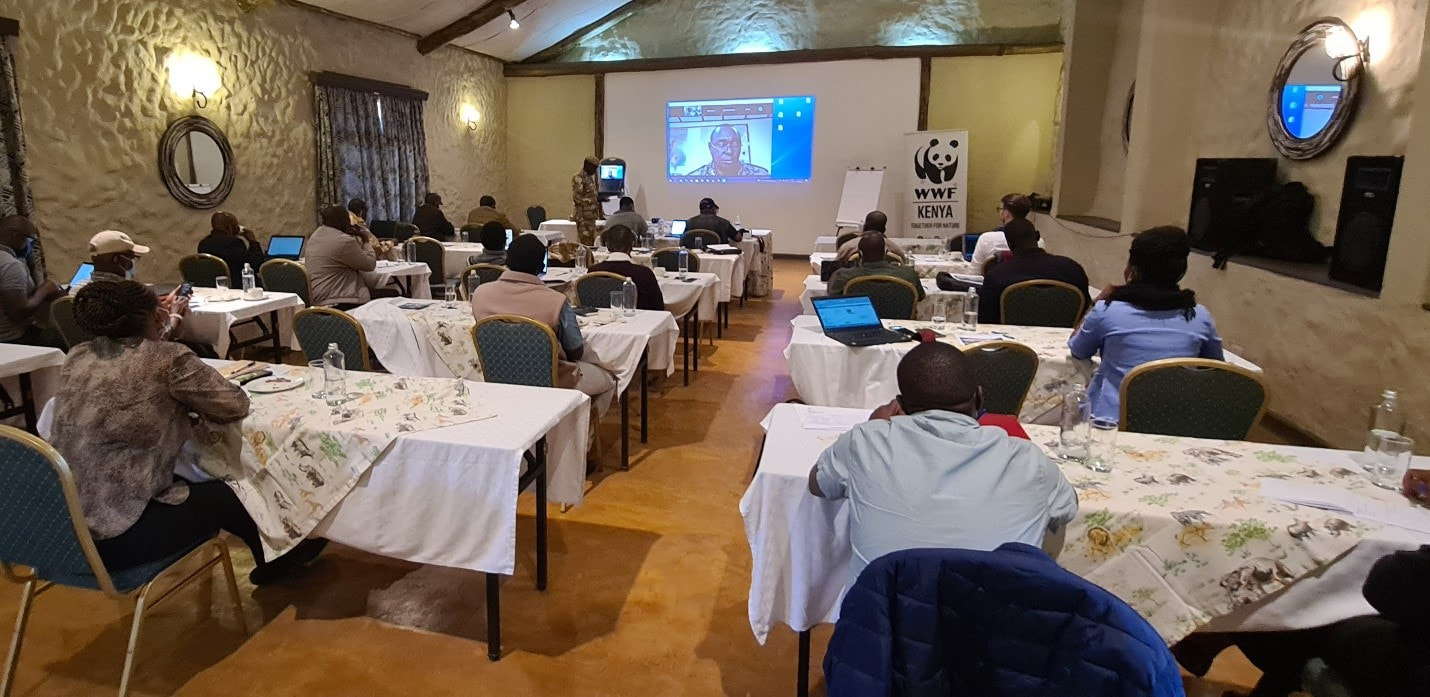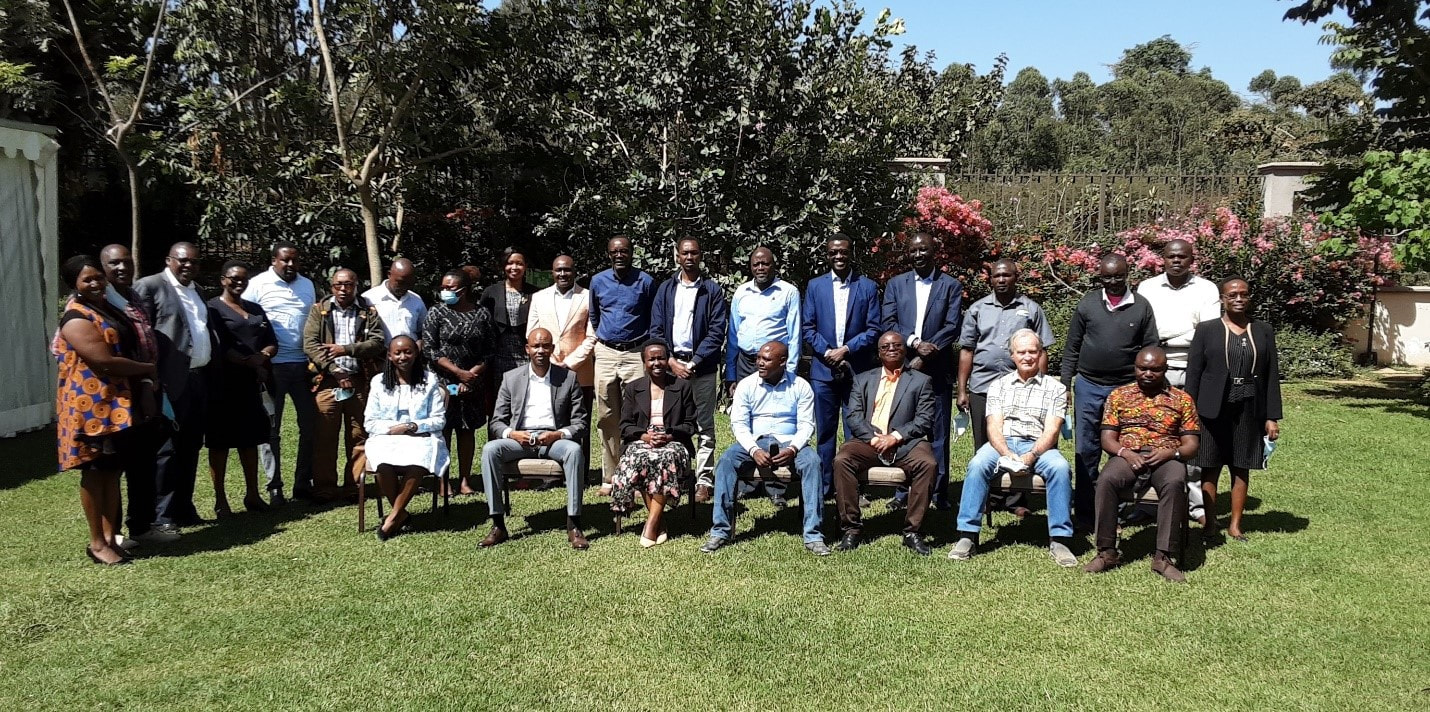Several important developments bearing on the future of Amboseli have occurred in the last few months.
Amboseli Ecosystem Management Plan 2020-2030
The AEMP 2020-2030 was due to go into effect in 2019, immediately after the AEMP 2008-2018 lapsed. The gap was due to the greatly expanded work entailed in expanding the 2008-2018 plan from wildlife to include land use planning and zoning for the ecosystem, and the need to comply with the Kajiado County spatial planning mandate. The formal launch was held in Amboseli on the 11th December 2020, attended by the Cabinet Secretary of Tourism and Wildlife. The plan was gazetted by the Attorney General in January of this year, giving the plan the legal standing needed to ensure compliance.
The implementation workshop was scheduled immediately afterwards but had to be deferred until 11th August due to government restrictions on meetings. The formal launch at Sopa Lodge in Amboseli was attended by some 30 people with others, including KWS assistant directors and staff, using Zoom. The meeting fell well short of assigning roles, responsibilities and funding pledges we hoped for, but did set up implementation committees and appoint members from across the spectrum of partners. In a big step forward, the Amboseli National Park Plan 2020-2030 is firmly embedded within the ecosystem plan. The national park committee includes community representatives and NGOs to ensure the two plans are developed in parallel.
Funding for the ecosystem and park plans is encouraging. WWF, US AID, IFAW, Big Life, Amboseli Trust for Elephants, ACC and other agencies are all likely to support portions of the plans. Therein lies the challenge. The number of players, funding and projects involved calls for implementing committees under KWS and AET to play a firm coordinating role to avoid a fragmentation of the ecosystem and park plans.
 Launch of the Amboseli Ecosystem Management Plan and Amboseli National Park Plan 2020-2030 at Sopa Lodge Amboseli, September 11th 2021.
Launch of the Amboseli Ecosystem Management Plan and Amboseli National Park Plan 2020-2030 at Sopa Lodge Amboseli, September 11th 2021. The Amboseli Ecosystem Trust, Kenya Wildlife Conservancy Association and conservation bodies met with the Governor, Kajiado County and his senior staff in August, urging his government to create a trust fund in support of wildlife conservancies around Amboseli and across the county. A follow-up meeting was held on 29th September 2021, convened by the Kajiado Cabinet Secretary Tourism, Wildlife and Culture along with the CS of Lands and other senior officers. Some forty members of NGOs, conservancies, county officials and other agencies attended the meeting to map out a bill setting up a county fund in support of wildlife conservancies. It transpired that few landowners had registered under the Wildlife Act because of the restrictive provisions.
ACP suggested the reservations could be overcome by widening the definition to include water, pasture, woodland and forest conservancies aimed at sustaining land health and resource use. The broader provisions are covered under the Environmental Management and Coordination Act. The advantage of the such conservancies is in giving landowners a way of forming larger voluntary associations to protect their lands from alienation and degradation. It was agreed that the bill should adopt the broader definition of conservancies to encourage their spread. Grass banks are likely to play an increasingly important role in providing late season forage in the face of land subdivision and sedentarization of pastoral communities. The meeting resolved to draw up a draft conservancy fund support bill and submit it back to the members.
As successful as the ecosystem and community-based conservation has been in Amboseli the pressure of sub-division has been building for years. Hastening the land rush, the Cabinet Secretary Lands two years ago declared all pastoral areas open to adjudication. The group ranches can choose to subdivide and give each member a parcel. Subdivision plans are well advanced on Ololograshi Ogululi Group Ranch (OOGR) and underway on Mbirikani, Kuku and Selengei, the three group ranches spanning the migratory range of the Amboseli animals beyond OOGR.
ACP, through a series of publications and reports over the last fifteen years, has documented the dire impact of sub-division and sedentarization on wildlife and livestock in Kaputei area north of Amboseli. Together with the African Conservation Centre, ACP produced a booklet charting ways to keep the rangelands open, based exchanges between East African pastoralists and American ranchers concerned about the future of their lands and way of life.
Anticipating land subdivision, several years ago I recommended the formation of a land trust for the Amboseli group ranches as way to keep subdivided lands open and viable for herders and wildlife. Unfortunately, OOGR, under growing pressure from members, pushed ahead with subdivision plans before exploring the land trust option as a way to avoid the mistakes of Kimana Group Ranch disaster years earlier. Kimana’s subdivision not only accelerated pasture degradation, but led to the sale of land to speculators and the displacement of herders.
At the request of AET, the Liz Claiborne Art Ortenberg Foundation, (LCAOF), agreed to fund the consultancy of Michael Odhiambo, a land use specialist. The consultancy should have looked into the role of AET land trusts for all group ranches rather than solely OOGR. Odhiambo scoped a land trust for OOGR and submitted his proposal to conservation partners. The proposed land trust and management body was supported in principle. OOGR, under growing pressure of group ranch members to form their own conservancy arrangements with tour operators and NGOs has floated a funding proposal for the land trust. Other group ranches are also forging ahead with their own subdivision plans and setting up post-group ranch bodies.
In discussion with AET, recommended a two-tiered approach to avoid the growing divide between OOGR and other group ranches threatening to fracture ecosystem planning and the AEMP. First, recognizing OOGR is pressing ahead with its own trust willy-nilly, it should put the proposal to the partners who came together to develop the AEMP 2020-2030 to solicit their input and funding. Second, AET should invite a scoping exercise among group ranches and partners to explore how to patch together the plans of the dissolving group ranches, conservancies and other bodies under AEMP and the umbrella role AET can play in supporting members lacking skills and funds to implement their plans.
AET in my view has a key role to play in raising funds to support the conservancies, lease arrangements, easements and land purchases under an ecosystem trust which it is already empowered to do. It also has a role to play in forging a strong political voice for the pastoral community in Amboseli, championing mix livestock-wildlife use, garnering donor funds through GEF, USAID, AID and other agencies, promoting larger community associations, and in integrating and coordinating grazing plans and the like. Its success recent overture to the Kajiado County to set up a conservancy support fund is a good example.

 RSS Feed
RSS Feed
